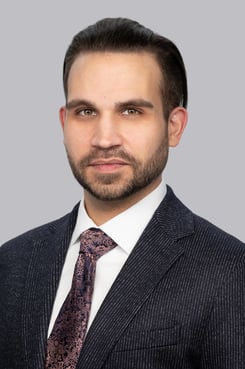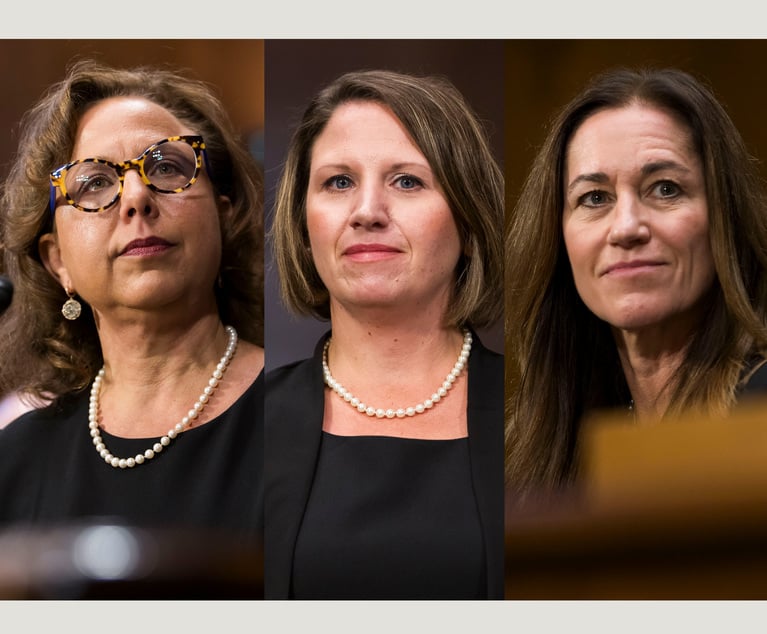Breaking Down Benefits and Burdens When Nonprofits Restructure
Internal Revenue Code (IRC) 501(c) tax-exempt nonprofit organizations engage in corporate restructuring, too, and these activities can be equally complex, bringing their own set of unique considerations.
July 22, 2019 at 02:14 PM
6 minute read
 Maxwell Briskman Stanfield, Meyer, Unkovic & Scott
Maxwell Briskman Stanfield, Meyer, Unkovic & ScottWhen we think of the notion of corporate restructuring—i.e., mergers, acquisitions and conversions—we tend to associate these activities with for-profit entities, such as AT&T purchasing Time Warner or Disney acquiring Fox in staggeringly expensive and complicated deals that shake up markets at their foundation. However, Internal Revenue Code (IRC) 501(c) tax-exempt nonprofit organizations engage in corporate restructuring, too, and these activities can be equally complex, bringing their own set of unique considerations.
A nonprofit organization will restructure when it wants to give up its tax-exempt status and become a taxable for-profit entity, or when it wants to merge, acquire or consolidate with another nonprofit organization. Sometimes, an existing for-profit may even want to become a nonprofit organization.
Any of those situations have federal tax implications beyond what would exist if the scenarios only included for-profit entities. For nonprofit organizations, the benefit of being tax-exempt comes with the burden of having to abide by certain restrictions, and those restrictions are a major factor to consider when making changes.
Restructuring Existing Nonprofits
In one way, the Internal Revenue Service (IRS) made corporate restructuring easier for nonprofit organizations, declaring in a February 2018 guidance that existing tax-exempt organizations no longer needed to submit new applications for recognition as nonprofit organizations when it changes its form or place of organization.
While the IRS typically will not determine whether a restructured nonprofit organization continues to qualify for tax-exempt status, organizations must take care to avoid several pitfalls in their dealings, such as excess benefit transactions, private benefit and inurement. If any of these were to occur and come to light, the results could be revocation of tax-exempt status and imposition of excise taxes. Thus, it's important that the organization's leaders and professional advisers understand these pitfalls before undergoing a corporate restructuring under which they may face increased scrutiny.
- Excess benefit transactions: When a “disqualified person” receives any economic benefit directly or indirectly from the nonprofit and if the value of the benefit exceeds the value of the consideration received, it is considered an excess benefit. A “disqualified person” is someone who is in a position to exercise substantial influence over a nonprofit, such as officers, directors or trustees.
When an excess benefit transaction occurs, excise taxes are imposed on 501(c)(3) and (4) organizations—specifically, public charities, private foundations or private operating foundations fall under 501(c)(3), and social welfare organizations are under 501(c)(4). The IRS typically attempts to impose those penalties when it is under the impression of an unreasonable valuation in mergers and consolidations involving those tax-exempt classifications of tax-exempt organizations.
- Private benefit: To remain exempt, 501(c)(3) organizations are expected to serve a public interest, such as charitable, religious, educational, or scientific purposes, among others. For that reason, a test may be conducted by the IRS to confirm if an organization is operated exclusively for these exempt purposes, not private ones. Accordingly, these entities must ensure that any assets acquired have been properly valued and that they have been acquired for a reasonable price. Failure to do so may result in a determination that the organization has provided a private benefit and is no longer entitled to tax-exempt classification.
- Inurement: This occurs when net earnings inure to the benefit of someone with the ability to influence or control an organization's earnings, and it is expressly prohibited in 501(c)(3) and (4) organizations. If a nonprofit organization enters into a transaction benefiting its insiders—a director or officer, for example—then the organization is not being operated exclusively for an exempt purpose and tax-exempt classification would not apply. When restructuring, a nonprofit organization's leadership or counsel should consider whether those in control have protected the organization's interests, such as assuring proper valuation of assets and keeping transactions with any related parties at arm's length.
Converting From For-profit to Nonprofit
Making the change from a for-profit entity to a nonprofit organization might be a culture shock for those leading an organization, but changing behaviors to avoid excess benefit transactions, private benefit and inurement is essential to the transition. Organizations must ensure that their assets are properly valued, they have paid any and all necessary taxes on the appreciation of assets, and they are engaging in tax-exempt activities and are no longer serving private interests. Failure to do any of these items could result in a loss of, or denial of, tax-exempt classification.
Relinquishing Tax-Exempt Status
There are many reasons why a nonprofit organization would purposely give up its tax-exempt status—some may find it is easier to increase revenue as a for-profit, or it may free them from restrictions while not affecting revenue streams—but restructuring in this manner does not mean it is a free-for-all for the organization. Restrictions continue to apply to the assets of a nonprofit, even if the organization gives up its exempt classification. For example, if an organization terminates its tax-exempt status, the IRS requires it to dedicate and distribute all of its assets to another exempt purpose. The rules regarding transactions that can result in private benefit or inurement also still apply.
This highlights how corporate restructuring can be necessary and complicated at the same time, especially when changing tax classifications and a multitude of assets are involved. An organization's leadership must be prepared and sure they are playing by the rules at all times, but most of all in these situations. Conferring with in-house legal counsel or seeking out the assistance of an attorney with experience in nonprofit law, corporate law or corporate restructuring will help make sure the transition goes smoothly.
Maxwell Briskman Stanfield is an attorney with Pittsburgh-based firm Meyer, Unkovic & Scott. He is a member of the corporate and business law group and assists clients with the formation and representation of nonprofit organizations.
This content has been archived. It is available through our partners, LexisNexis® and Bloomberg Law.
To view this content, please continue to their sites.
Not a Lexis Subscriber?
Subscribe Now
Not a Bloomberg Law Subscriber?
Subscribe Now
NOT FOR REPRINT
© 2025 ALM Global, LLC, All Rights Reserved. Request academic re-use from www.copyright.com. All other uses, submit a request to [email protected]. For more information visit Asset & Logo Licensing.
You Might Like
View All
Pa. Federal District Courts Reach Full Complement Following Latest Confirmation

The Defense Bar Is Feeling the Strain: Busy Med Mal Trial Schedules Might Be Phila.'s 'New Normal'
7 minute read
Federal Judge Allows Elderly Woman's Consumer Protection Suit to Proceed Against Citizens Bank
5 minute read
Judge Leaves Statute of Limitations Question in Injury Crash Suit for a Jury
4 minute readTrending Stories
Who Got The Work
J. Brugh Lower of Gibbons has entered an appearance for industrial equipment supplier Devco Corporation in a pending trademark infringement lawsuit. The suit, accusing the defendant of selling knock-off Graco products, was filed Dec. 18 in New Jersey District Court by Rivkin Radler on behalf of Graco Inc. and Graco Minnesota. The case, assigned to U.S. District Judge Zahid N. Quraishi, is 3:24-cv-11294, Graco Inc. et al v. Devco Corporation.
Who Got The Work
Rebecca Maller-Stein and Kent A. Yalowitz of Arnold & Porter Kaye Scholer have entered their appearances for Hanaco Venture Capital and its executives, Lior Prosor and David Frankel, in a pending securities lawsuit. The action, filed on Dec. 24 in New York Southern District Court by Zell, Aron & Co. on behalf of Goldeneye Advisors, accuses the defendants of negligently and fraudulently managing the plaintiff's $1 million investment. The case, assigned to U.S. District Judge Vernon S. Broderick, is 1:24-cv-09918, Goldeneye Advisors, LLC v. Hanaco Venture Capital, Ltd. et al.
Who Got The Work
Attorneys from A&O Shearman has stepped in as defense counsel for Toronto-Dominion Bank and other defendants in a pending securities class action. The suit, filed Dec. 11 in New York Southern District Court by Bleichmar Fonti & Auld, accuses the defendants of concealing the bank's 'pervasive' deficiencies in regards to its compliance with the Bank Secrecy Act and the quality of its anti-money laundering controls. The case, assigned to U.S. District Judge Arun Subramanian, is 1:24-cv-09445, Gonzalez v. The Toronto-Dominion Bank et al.
Who Got The Work
Crown Castle International, a Pennsylvania company providing shared communications infrastructure, has turned to Luke D. Wolf of Gordon Rees Scully Mansukhani to fend off a pending breach-of-contract lawsuit. The court action, filed Nov. 25 in Michigan Eastern District Court by Hooper Hathaway PC on behalf of The Town Residences LLC, accuses Crown Castle of failing to transfer approximately $30,000 in utility payments from T-Mobile in breach of a roof-top lease and assignment agreement. The case, assigned to U.S. District Judge Susan K. Declercq, is 2:24-cv-13131, The Town Residences LLC v. T-Mobile US, Inc. et al.
Who Got The Work
Wilfred P. Coronato and Daniel M. Schwartz of McCarter & English have stepped in as defense counsel to Electrolux Home Products Inc. in a pending product liability lawsuit. The court action, filed Nov. 26 in New York Eastern District Court by Poulos Lopiccolo PC and Nagel Rice LLP on behalf of David Stern, alleges that the defendant's refrigerators’ drawers and shelving repeatedly break and fall apart within months after purchase. The case, assigned to U.S. District Judge Joan M. Azrack, is 2:24-cv-08204, Stern v. Electrolux Home Products, Inc.
Featured Firms
Law Offices of Gary Martin Hays & Associates, P.C.
(470) 294-1674
Law Offices of Mark E. Salomone
(857) 444-6468
Smith & Hassler
(713) 739-1250





